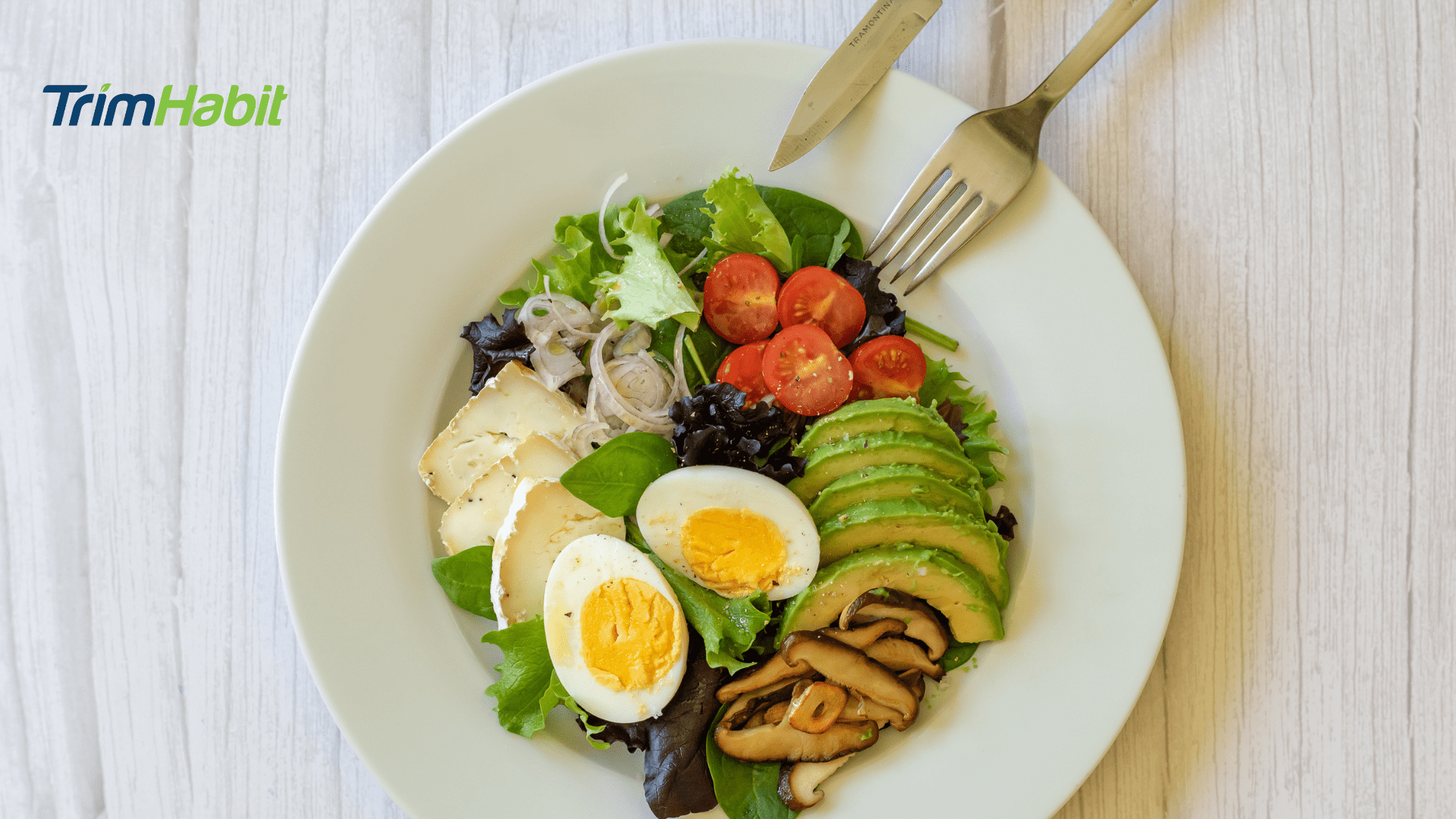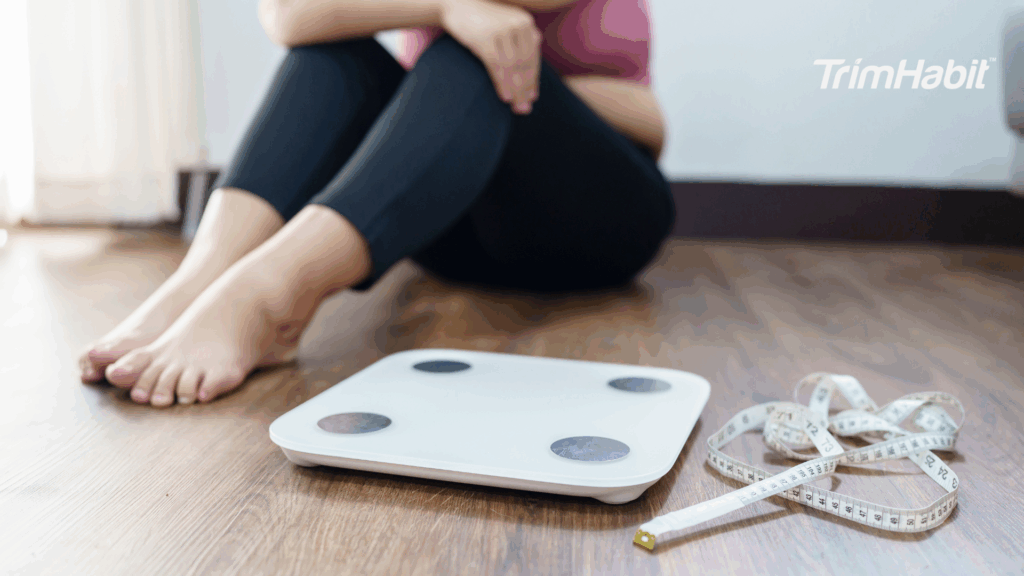If you’re taking Semaglutide through brands like Ozempic, Wegovy, or Rybelsus, you probably understand how important it is to match your eating habits with your health needs. Choosing low-carb meals is one of the most helpful ways to support both weight management and blood sugar control while on this medication. These types of dinners can keep your glucose levels steady and make the appetite-reducing effects of Semaglutide even more effective.
In this article we’ll explore low-carb dinners that work well with semaglutide and help you stay on track with your wellness journey.
Semaglutide Overview
Semaglutide is a medication used to treat type 2 diabetes and obesity. It mimics the effects of a natural hormone called GLP-1 (glucagon-like peptide-1), which helps regulate blood sugar, insulin levels, appetite, and calories. It is classified as a GLP-1 receptor agonist1.
Approved Uses
- Type 2 Diabetes Mellitus: Improves glycemic control with diet and exercise.
- Chronic Weight Management (Wegovy): For adults with a BMI ≥30 or ≥27 with at least one weight-related condition (e.g., hypertension, type 2 diabetes)2.
- Cardiovascular Risk Reduction: In adults with type 2 diabetes and established cardiovascular disease (Ozempic).
How It Works
- Increases insulin secretion (when glucose levels are high)
- Reduces glucagon secretion (a hormone that raises blood sugar)
- Slows gastric emptying (helps you feel full longer)
- Reduces appetite and food intake
Administration
- Injection: Once weekly subcutaneous injection (Ozempic, Wegovy)
- Oral: Once daily tablet (Rybelsus)
Principles Of A Low-Carb Diet
A low-carbohydrate diet reduces the intake of carbohydrates, especially those found in sugary foods, bread, pasta, and starchy vegetables. The goal is to promote better blood sugar control, fat burning, and satiety while avoiding whole grains by emphasizing protein, healthy fats, and non-starchy vegetables3.
Carbohydrate Restriction
- Total daily carbohydrate intake is typically reduced to between 20–130 grams, depending on the specific approach:
- Very low-carb (ketogenic): 20–50 grams per day
- Moderate low-carb: 50–100 grams per day
- Liberal low-carb: 100–130 grams per day
- Priority is given to eliminating refined carbs such as:
- Sugar-sweetened beverages
- White bread, pasta, and rice
- Pastries and processed snacks
Higher Protein Intake
- Protein helps maintain lean muscle mass and reduces hunger.
- Common sources include:
- Eggs, poultry, beef, pork
- Fish and seafood
- Greek yogurt, cottage cheese
- Plant-based proteins (tofu, tempeh, legumes in moderation)
Emphasis on Healthy Fats
- Replaces calories from carbs with fats from natural, whole-food sources.
- Recommended fats include:
- Olive oil, avocado oil, and coconut oil
- Avocados, nuts, and seeds
- Fatty fish like salmon or sardines
Focus on Non-Starchy Vegetables
- Low in carbs, high in fiber, and rich in nutrients.
- Examples:
- Leafy greens (spinach, kale, lettuce)
- Cruciferous vegetables (broccoli, cauliflower, Brussels sprouts)
- Peppers, zucchini, cucumbers, mushrooms
Avoid Processed Low-Carb Foods
- Focus on whole, unprocessed foods rather than heavily processed low-carb products that may contain additives or artificial sweeteners.
Stay Hydrated and Balance Electrolytes
- Reducing carbs can lead to fluid and electrolyte loss.
- Drink plenty of water and consider increasing sodium, potassium, and magnesium intake from natural sources.
Why Low-Carb Works Well With Semaglutide
Low-carb dinners support semaglutide’s effects by easing digestion and helping keep blood sugar levels steady through the evening. Since semaglutide slows how quickly food leaves the stomach, eating starch-heavy meals like pasta, bread, or potatoes can cause food to linger too long, leading to bloating, nausea, or discomfort that stretches into the night.
In contrast, meals built around lean proteins like grilled chicken or tofu, non-starchy vegetables like spinach or zucchini, and healthy fats such as olive oil or avocado are lower in carbs, easier to digest, and still satisfying. This combination helps avoid the sluggish, overly full feeling that can happen when digestion slows. It also reduces the chance of blood sugar crashes overnight, which can disrupt sleep or cause early hunger. Keeping dinners low in carbs can make semaglutide feel more tolerable while supporting its long-term metabolic benefits.
Low-Carb Dinners That Work Well With Semaglutide
Here are low-carb dinner ideas designed to be tasty and work well with semaglutide, focusing on digestibility, appetite support, and blood sugar control while minimizing side effects like nausea and bloating.
Lemon Herb Grilled Chicken with Roasted Zucchini & Cauliflower Rice
- Protein: 4–5 oz grilled chicken breast (skinless)
- Veggies: Roasted zucchini + riced cauliflower sautéed with garlic
- Fat: Drizzle of olive oil and fresh lemon juice
Why it works: Light, non-greasy, easy on digestion, and satisfying in small portions.
Baked Salmon with Asparagus and Mashed Cauliflower
- Protein: 4 oz salmon fillet (baked with dill or lemon)
- Veggies: Steamed or roasted asparagus
- Side: Mashed cauliflower (butter or olive oil for creaminess)
Why it works: Omega-3s support heart health, and the fiber from cauliflower and asparagus helps with fullness.
Zucchini Noodles with Ground Turkey Marinara
- Protein: Ground turkey sautéed with onion and garlic
- Veggies: Spiralized zucchini noodles (“zoodles”)
- Sauce: Sugar-free marinara with Italian seasoning
Why it works: Mimics pasta night without the carbs; light but flavorful.
Egg Muffin “Dinner Bites” with Spinach and Cheese
- Protein: Eggs baked in muffin tins with diced spinach, mushrooms, and cheese
- Side: Side salad with arugula, cucumber, and vinaigrette
Why it works: Great for low appetite days; small, nutrient-dense bites are easier to tolerate.
Stir-Fried Tofu and Veggies in Coconut Aminos
- Protein: Firm tofu cubes, pan-seared
- Veggies: Bok choy, bell peppers, mushrooms
- Flavor: Light sauce with garlic, ginger, and coconut aminos (low-sodium soy sauce alternative)
Why it works: Plant-based and easy on the stomach, with satisfying umami flavor.
Lettuce-Wrapped Turkey Burgers
- Protein: Ground turkey patty, grilled or pan-seared
- Wrap: Large romaine or butter lettuce leaves
- Toppings: Avocado slices, tomato, mustard, or sugar-free ketchup
Why it works: Satisfies cravings without bread or greasy add-ons.
Shrimp Cauliflower Fried Rice
- Protein: Shrimp (lightly sautéed)
- Veggies: Riced cauliflower, green onion, egg, peas, and carrots (light portion)
- Flavor: Garlic, ginger, coconut aminos, or tamari
Why it works: High-protein, low-fat, and flavorful—easy to portion.
Meal Preparations And Planning Tips
Having low-carb dinners ready ahead of time makes it easier to avoid foods that spike blood sugar or cause discomfort while using Semaglutide. When meals are already portioned and balanced with lean protein, non-starchy vegetables, and healthy fats, you’re less likely to overeat or skip dinner due to low appetite or nausea. This steady routine helps support the medication’s effects, keeps digestion calmer, and ensures you stay on track even when energy is low or cravings hit.
Keep Meals Simple and Digestible
- Stick to 3–5 core proteins, 3–5 vegetables, and 2–3 fats you tolerate well.
- Focus on easy-to-digest meals, especially early in treatment when nausea is common.
Good meal bases:
- Grilled chicken + zucchini + avocado
- Turkey meatballs + spaghetti squash + marinara
- Egg muffins with spinach + side salad
Prep in Small Portions
- Appetite can vary daily on semaglutide—don’t overprep.
- Cook 2–3 days’ worth at a time, not a whole week.
- Store meals in single-serving containers to reduce the temptation to overeat.
Use Pre-Cut or Frozen Veggies
- Saves time and effort.
- Frozen cauliflower rice, broccoli, spinach, and stir-fry blends are low-carb and convenient.
Choose Leaner Proteins First
- Fatty meats can trigger nausea. Opt for chicken breast, ground turkey, fish, eggs, tofu
- If adding fat, do it in measured amounts (e.g., a teaspoon of olive oil or a slice of avocado).
Batch-Cook Smart Staples
- Make large batches of:
- Cauliflower rice or mash
- Zucchini noodles
- Hard-boiled eggs
- Grilled or shredded chicken
- Mix and match these with different sauces and seasonings to create variety.
Plan for Low Appetite Days
- Keep light, easy options on hand:
- Protein shakes
- Bone broth
- Cottage cheese or Greek yogurt
- Egg bites or tuna salad
Use a Weekly Plan
- Pick 2–3 dinners to rotate through the week.
- Double up on dinner portions to use leftovers for lunch the next day.
- Avoid prepping new or untested meals during the adjustment phase of semaglutide.
Label and Date Everything
- Mark each prepped meal with the date and name to keep your fridge organized and avoid waste. This helps you use meals while they’re still fresh and prevents confusion about what’s safe to eat. Use stackable glass containers or bento boxes to save space, see contents easily, and portion your low-carb dinners in a clean, practical way.
Avoid Trigger Foods
- Don’t prep carb-heavy or rich, greasy meals “for others” if you’re likely to overeat them.
- Out of sight = out of mind, especially when appetite control is unpredictable.
Track What Works
- Keep a simple meal log to note which low-carb dinners leave you feeling full and comfortable while using Semaglutide. Tracking helps you spot which ingredients or portion sizes work best for your appetite, digestion, and blood sugar stability. Over time, this makes it easier to repeat meals that satisfy you and avoid ones that cause discomfort or leave you hungry.









